The Intel Core i9-12900KS Review: The Best of Intel's Alder Lake, and the Hottest
by Gavin Bonshor on July 29, 2022 8:00 AM ESTCPU Benchmark Performance: Simulation And Rendering
Simulation and Science have a lot of overlap in the benchmarking world, however for this distinction we’re separating into two segments mostly based on the utility of the resulting data. The benchmarks that fall under Science have a distinct use for the data they output – in our Simulation section, these act more like synthetics but at some level are still trying to simulate a given environment.
We are using DDR5 memory at the following settings:
- DDR5-4800(B) CL40
Simulation

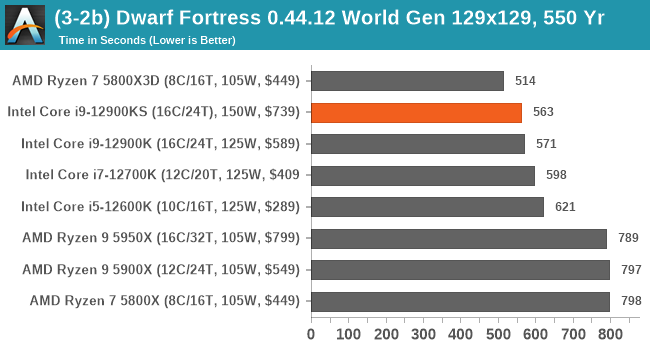
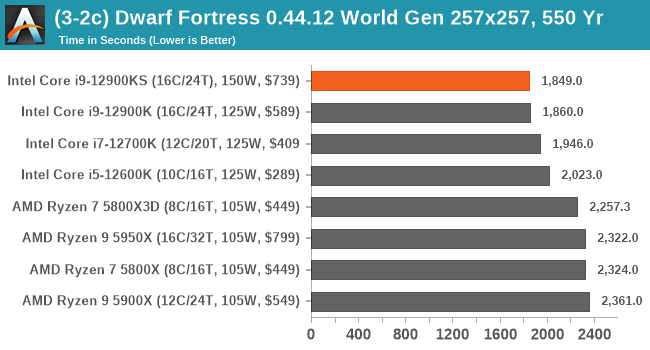
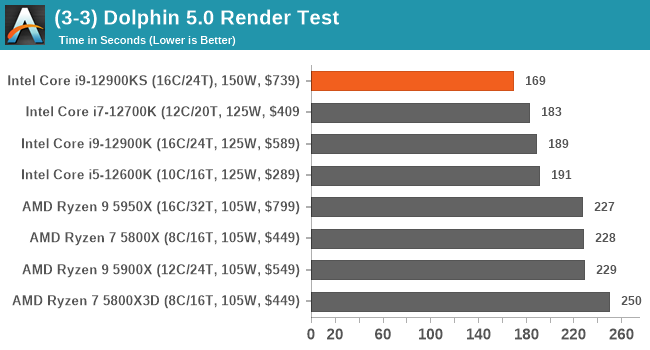
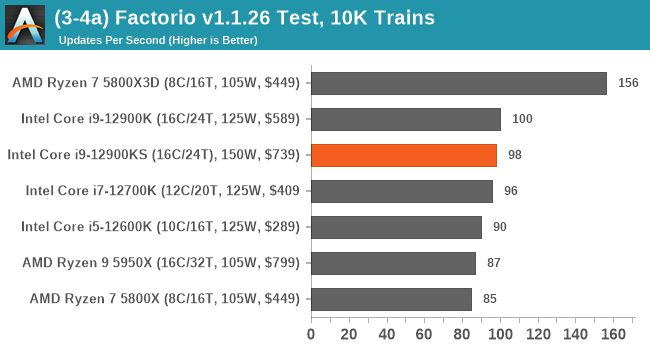
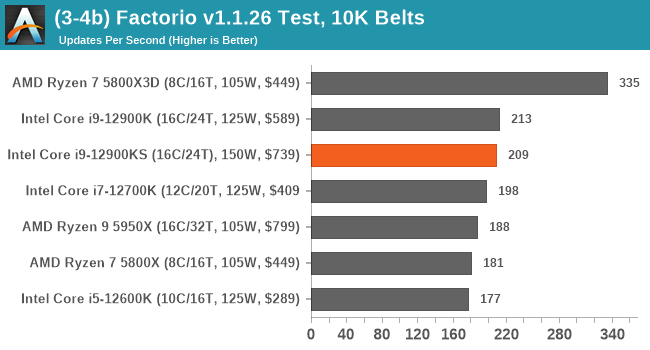
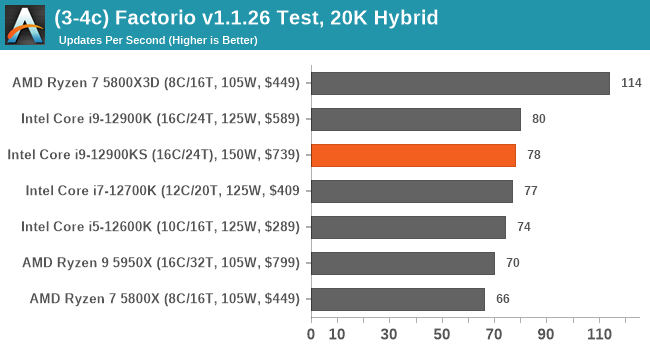
When it comes to simulation, the higher core clock speeds of the Core i9-12900KS didn't make any effect in our Factorio benchmark, which AMD's Ryzen 7 5800X3D with 3D V-Cache gives a more effective boost to performance. In our Dolphin test, the Core i9-12900KS was quicker by around 7-8%, and in our Dwarf Fortress benchmark, the Core i9-12900KS was better than the K, but not as good as the Ryzen 7 5800X3D.
Rendering
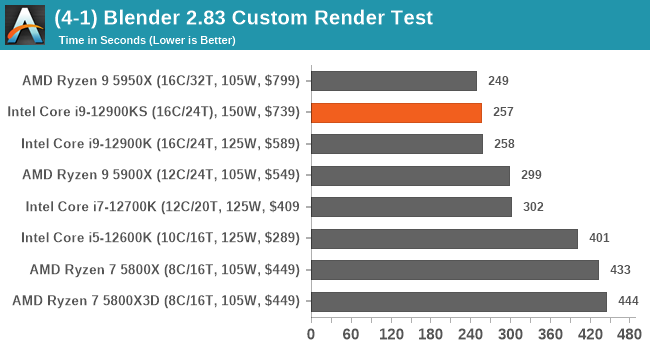
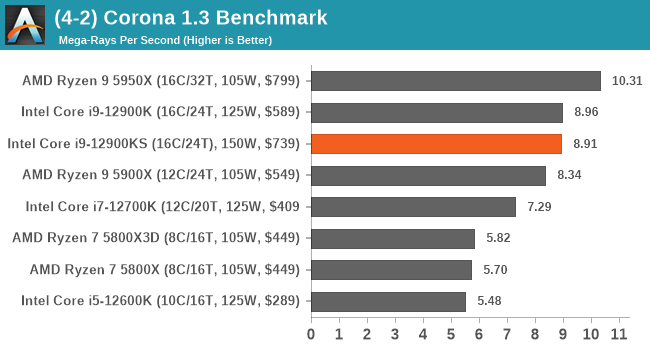
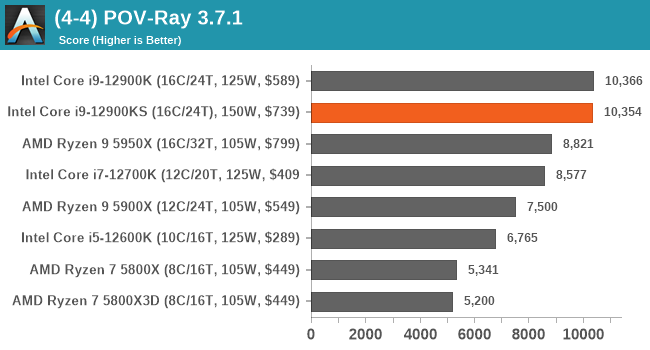
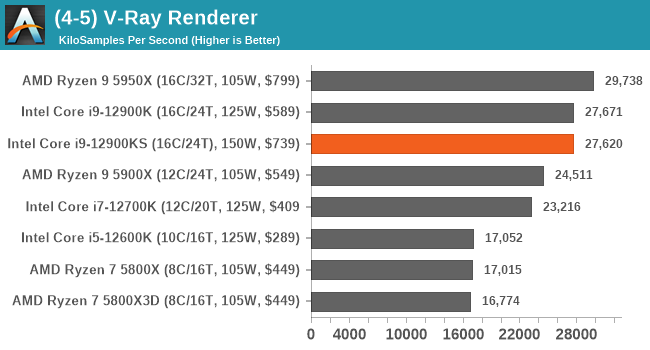
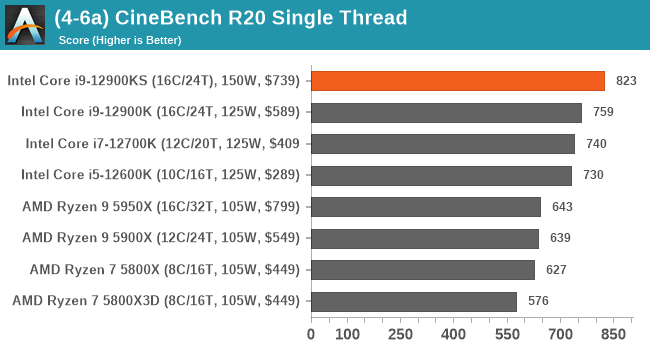
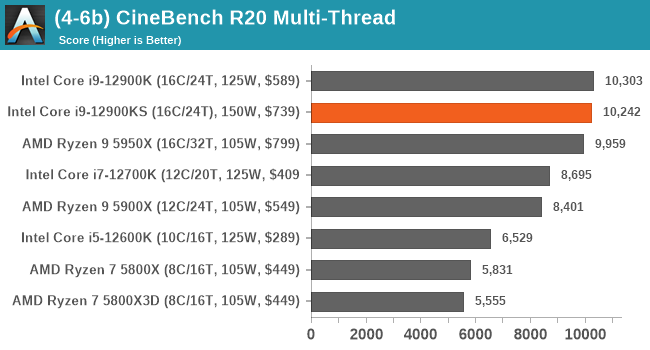
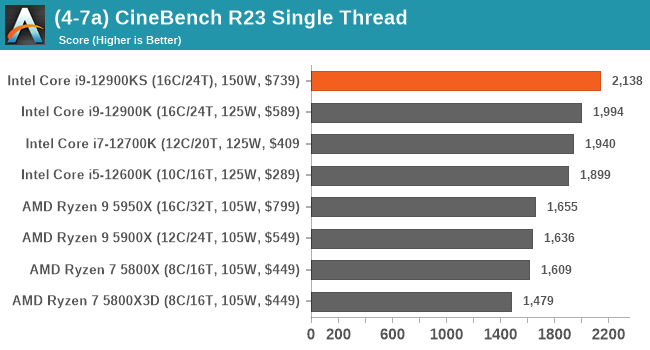

Focusing on rendering performance, the results between the Core i9-12900KS and Core i9-12900K are consistently close. In single-threaded benchmarks such as CineBench R23, we saw impressive performance in comparison to other chips on test, with a 7% jump in R23 single thread performance over the Core i9-12900K.
The multi-threaded performance though between the two Intel 12th Gen Core i9 chips wasn't much difference, but there's a clear advantage in single-thread performance when rendering. It's worth pointing out that rendering is typically a multi-threaded workload.










56 Comments
View All Comments
Oxford Guy - Sunday, July 31, 2022 - link
I really have to spell the logic out?Carls Car - Sunday, July 31, 2022 - link
No thanks.Carls Car - Saturday, July 30, 2022 - link
Stock is indeed too high. With minimal effort tweaks, I've set my 12900KS to 1.32v @ LLC4 (ASUS). Dropped temps and power consumption massively, while still being able to maintain the stock 5.2/5.5 frequencies.Carls Car - Saturday, July 30, 2022 - link
Let me follow up by saying, a 360mm AIO is still BARELY enough to tame the 12900KS. Some of this can be attributed to the ILM. I'm considering getting the TG one and giving it a go.Silver5urfer - Friday, July 29, 2022 - link
With the Raptor Lake leaks. Basically Intel relegated themselves to an 8C/6C gaming oriented processor or 8C max ST performance CPU system. They will keep on adding those E cores to fight AMD's competition in MT and in ST side add cache and brute force clocks.Rumors are 13600K itself is consuming a ton of power north of 200W because they added more E cores and increased clocks. I mean 300W is pretty doable for DH15 but since Rocket Lake Intel's heat density has increased a ton. Making the CPU cooling a challenge if we OC it or tune it.
10900K was hot but 11900K was super hot for it's performance and regressed in Clocks and IMC. 12900K is like Rocket Lake in Heat density, and not like 10900K but the performance it gave was super high unlike 11900K.
12900K basically needs an AIO minimum. Now 13900K with even more 5.7GHz boosting it will demand even more cooling. Shame how Intel doesn't have a successor to Core series yet. And they keep adding these E cores, Increase clocks, Cache to combat.
Finally I think this CPU is worthless. $750 cost for what ? A beta product - new DDR5 IMC, shoddy DDR4 IMC, yeah not all 12900Ks can handle 4000MHz Gear 1. Very high heat if you OC, too much premium only to be EOLed by 13900K basically a year of lifespan. Finally the LGA1700's physical flaws in design causing the PCB and CPU to bend. Yea the advantages of new PCIe 5.0 and DMI speeds with new Chipset bandwidth and no BS stable BIOS unlike AMD's shoddy firmware. I will wait until DDR5 matures by 5 years from now and then purchase what's best at that time.
Alistair - Friday, July 29, 2022 - link
I wonder if Anandtech had that bent CPU problem here with their tests. Their custom loop was still not enough.Gavin Bonshor - Friday, July 29, 2022 - link
Hi Alistair, it wasn't a custom loop, that's what is needed to get optimal performance. We used an ASUS Ryujin II 360 mm AIO ($310) and I used an MSI 360 mm AIO. The ASUS was actually better.When the firmware is pushing 1.4 V through the VCore on these chips, you're going to hit thermal throttling
erotomania - Friday, July 29, 2022 - link
Thanks GB!Alistair - Saturday, July 30, 2022 - link
Oh sorry, quite right!Alistair - Saturday, July 30, 2022 - link
I got confused because of this sentence:"One potential workaround to this would be to use more aggressive cooling methods such as a custom water loop. Still, even with our highly premium $310 cooler, we consistently hit 100°C on the heavier workloads,"
I assumed that a highly premium $310 cooler was a custom loop ha... could change it to "even with out highly premium (not custom loop) $310 cooler